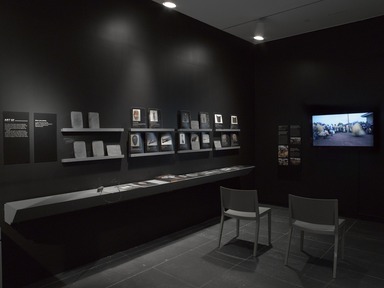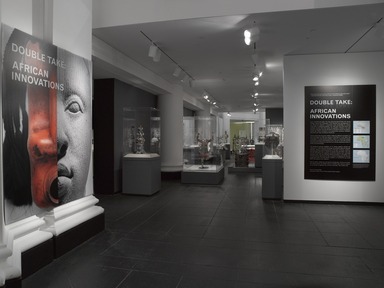

Double Take: African Innovations, October 29, 2014 through March 19, 2017 (Image: DIG_E_2014_Double_Take_African_Innovations_01_PS4.jpg Brooklyn Museum photograph, 2014)

Double Take: African Innovations, October 29, 2014 through March 19, 2017 (Image: DIG_E_2014_Double_Take_African_Innovations_02_PS4.jpg Brooklyn Museum photograph, 2014)
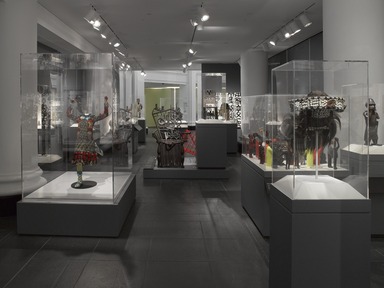
Double Take: African Innovations, October 29, 2014 through March 19, 2017 (Image: DIG_E_2014_Double_Take_African_Innovations_03_PS4.jpg Brooklyn Museum photograph, 2014)
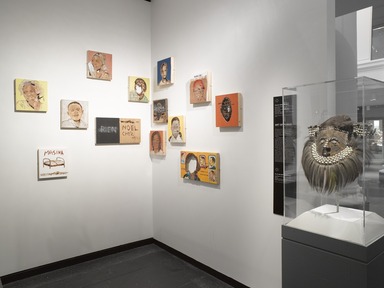
Double Take: African Innovations, October 29, 2014 through March 19, 2017 (Image: DIG_E_2014_Double_Take_African_Innovations_04_PS4.jpg Brooklyn Museum photograph, 2014)

Double Take: African Innovations, October 29, 2014 through March 19, 2017 (Image: DIG_E_2014_Double_Take_African_Innovations_05_PS4.jpg Brooklyn Museum photograph, 2014)
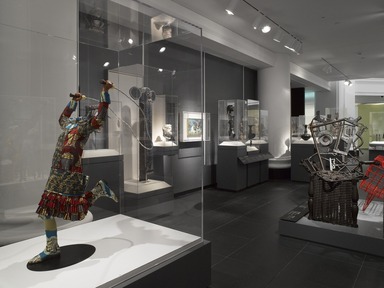
Double Take: African Innovations, October 29, 2014 through March 19, 2017 (Image: DIG_E_2014_Double_Take_African_Innovations_06_PS4.jpg Brooklyn Museum photograph, 2014)

Double Take: African Innovations, October 29, 2014 through March 19, 2017 (Image: DIG_E_2014_Double_Take_African_Innovations_07_PS4.jpg Brooklyn Museum photograph, 2014)
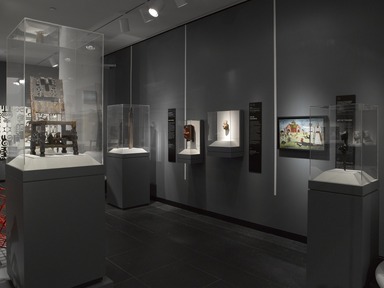
Double Take: African Innovations, October 29, 2014 through March 19, 2017 (Image: DIG_E_2014_Double_Take_African_Innovations_08_PS4.jpg Brooklyn Museum photograph, 2014)
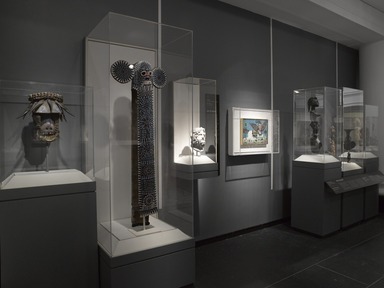
Double Take: African Innovations, October 29, 2014 through March 19, 2017 (Image: DIG_E_2014_Double_Take_African_Innovations_09_PS4.jpg Brooklyn Museum photograph, 2014)

Double Take: African Innovations, October 29, 2014 through March 19, 2017 (Image: DIG_E_2014_Double_Take_African_Innovations_10_PS4.jpg Brooklyn Museum photograph, 2014)
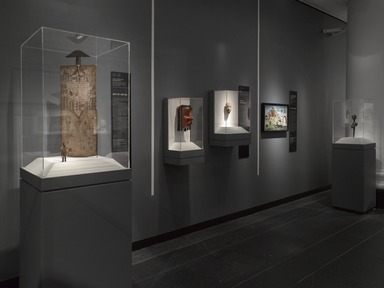
Double Take: African Innovations, October 29, 2014 through March 19, 2017 (Image: DIG_E_2014_Double_Take_African_Innovations_11_PS4.jpg Brooklyn Museum photograph, 2014)

Double Take: African Innovations, October 29, 2014 through March 19, 2017 (Image: DIG_E_2014_Double_Take_African_Innovations_12_PS4.jpg Brooklyn Museum photograph, 2014)
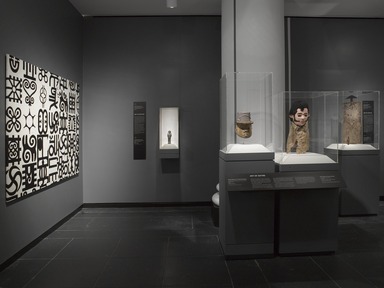
Double Take: African Innovations, October 29, 2014 through March 19, 2017 (Image: DIG_E_2014_Double_Take_African_Innovations_13_PS4.jpg Brooklyn Museum photograph, 2014)
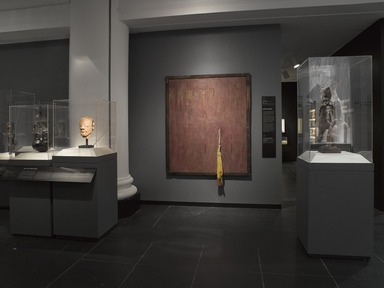
Double Take: African Innovations, October 29, 2014 through March 19, 2017 (Image: DIG_E_2014_Double_Take_African_Innovations_14_PS4.jpg Brooklyn Museum photograph, 2014)
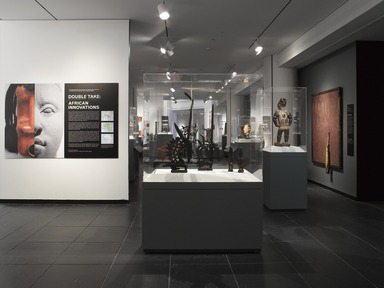
Double Take: African Innovations, October 29, 2014 through March 19, 2017 (Image: DIG_E_2014_Double_Take_African_Innovations_15_PS4.jpg Brooklyn Museum photograph, 2014)

Double Take: African Innovations, October 29, 2014 through March 19, 2017 (Image: DIG_E_2014_Double_Take_African_Innovations_16_PS4.jpg Brooklyn Museum photograph, 2014)

Double Take: African Innovations, October 29, 2014 through March 19, 2017 (Image: DIG_E_2014_Double_Take_African_Innovations_17_PS4.jpg Brooklyn Museum photograph, 2014)
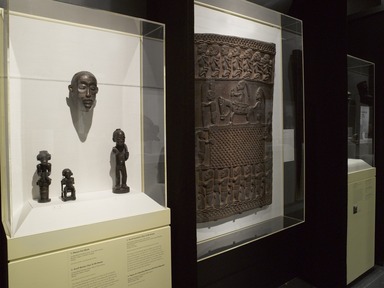
Double Take: African Innovations, October 29, 2014 through March 19, 2017 (Image: DIG_E_2014_Double_Take_African_Innovations_18_PS4.jpg Brooklyn Museum photograph, 2014)

Double Take: African Innovations, October 29, 2014 through March 19, 2017 (Image: DIG_E_2014_Double_Take_African_Innovations_19_PS4.jpg Brooklyn Museum photograph, 2014)

Double Take: African Innovations, October 29, 2014 through March 19, 2017 (Image: DIG_E_2014_Double_Take_African_Innovations_20_PS4.jpg Brooklyn Museum photograph, 2014)
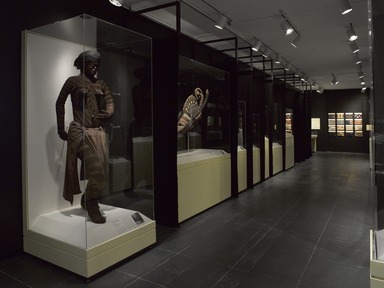
Double Take: African Innovations, October 29, 2014 through March 19, 2017 (Image: DIG_E_2014_Double_Take_African_Innovations_21_PS4.jpg Brooklyn Museum photograph, 2014)
Double Take: African Innovations
-
Double Take: African Innovations
Look—and then look again. You may sense the hand of Eshu, the Yoruba trickster, "god of the crossroads," in the relocation and reconfiguration of our African art collection—a temporary move necessitated by ongoing construction in neighboring galleries. Yet, while Eshu may bring chaos and confusion, he also offers the traveler the possibility of finding a new path forward. In that spirit, amid the disruption of Brooklyn’s African art galleries, Double Take: African Innovations is an experimental, temporary installation that offers new ways of looking at African art.
African artists have long been skilled in balancing different conceptions of time. Even today, an artist may produce a work that is, in one sense, the continuation of a long-standing tradition, made for a ceremonial purpose governed by a cyclical understanding of time. Yet, such a work also remains a personal and contemporary response to an evolving, progressive history of artistic and social change.
The Museum's previous installation of its African galleries situated the collection in a linear, historical chronology; this exhibition takes the opposite approach, pairing or grouping artworks on the basis of themes, solutions, and techniques that recur in African art across time and space. Here you will find illuminating and surprising connections between even seemingly dissimilar works, from very different periods and places. In this gallery, you will also have the opportunity to help us continue investigating this story by suggesting further recurring themes, problems, or connections you would like to see explored in our collection.
With its artistic, intellectual, and spiritual sophistication, African art across the millennia offers an endless series of possible paths between objects. As we rebuild our galleries, join us at the crossroads. Take another look.
Kevin D. Dumouchelle
Associate Curator, Arts of Africa and the Pacific Islands -
Why are the artists "unidentified"?
In African art, as in many fields ranging from the arts of the Americas to European medieval art, we often have no record of the artist's name. The reasons for this are varied and complicated. Most of the cultures represented here relied upon oral histories, which may not have memorialized artists' names. In some cultures, the names of artists were deliberately obscured because the works were considered to have an otherworldly origin. In other cases, although the identity of an artist may have been known locally, the original collector of the work did not record it.
Through a combination of careful historical research and visual analysis, however, it is often possible to ascribe a body of work to an individual hand, if not a known name. Thus, some works here are attributed to specific artists, such as the Master of Ntem. -
Why is this case empty?
This case is currently empty, but we'd like you to help us decide how to fill it with another selection of works from the more than six thousand African objects in our collection. -
ART OF _________
Now that you've seen some unexpected groupings of African artworks, explore the collection and create your own pairing, using images of some of the objects still in storage.
Display your pair on a shelf and use a chalkboard to tell us what theme connects the works. We will be following your ideas closely and will choose one pair every few months to display in the empty case nearby. -
MASQUERADES FROM CÔTE D’IVOIRE
Three masked performances in a Dan village—Dean Gle, Ge Gon, and Ge Gblin, Booni, Bafing region, Côte d’Ivoire, July 11, 2014
Masks have historically played integral but varied roles in all aspects of Dan life, and these three performances demonstrate some of that range. The first mask, dean gle, is considered to have a sweet demeanor and plays a peacemaking role in the community. The next, a beaked mask known as ge gon, performs with fly whisks in sweeping gestures imitating a graceful bird—recalling Dan mythology about the hornbill, thought to have once brought the oil palm. The last dance, ge gblin, is performed on stilts and typically enlivens village celebrations.
Goli Glen dance, Baule performance from Bendekouassikro, Vallée du Bandama region, Côte d’Ivoire, July 16, 2014
Goli is typically a day-long series of jubilant dances, featuring four pairs of masked dancers. In this clip, a pair of Goli Glen masked performers interact with the crowd. The Baule acquired the Goli performance from the neighboring Wan people at the turn of the twentieth century—its songs are still sung in the Wan language, though it is believed that only the horns played during the dances "speak" the masks' language.
Nufori Acrobats, Senufo Performance from Waraniéné, Savanes region, Côte d’Ivoire, July 20, 2014
A band accompanies acrobatic nufori dancers as they tumble before a gathered crowd. Representing panthers, nufori are intended to frighten as well as entertain. Members of the secret Poro society, the highly skilled dancers are trained from a very early age.
-
August 1, 2014
A new exhibition of African works from the Brooklyn Museum’s collection, displayed in fifteen thematic pairs, explores new ways of looking at African art by focusing on artistic themes, solutions, and techniques recurring throughout history. Double Take: African Innovations will open October 29 in a temporary location while an extensive renovation of the first floor of the Brooklyn Museum is under way. The installation will also include selections from its extensive holdings in an open-storage display.
Double Take, the second phase in the Brooklyn Museum’s ongoing expansion of its African collection and exploration of the stories these works can tell, continues and builds upon African Innovations, the critically acclaimed historical presentation that will be deinstalled in late September. This interim installation of nearly forty objects features a number of new and major recent acquisitions. Looking Back Into the Future (2008),a work by internationally recognized Ghanaian artist Owusu-Ankomah, whose paintings depict a spiritual world inhabited by people and symbols, will be paired with an ancient hieroglyph-inscribed shabti of the Nubian king Senkamanisken (r. 640–620 B.C.E.) to explore the art of writing as a fundamental embodiment of human expression in Africa over the course of many centuries. The Owusu-Ankomah acrylic on canvas depicts a nude male figure emerging out of a complex group of symbols representing proverbs of the Akan people of Ghana.
Also recently acquired, and on view at the Brooklyn Museum for the first time, is Fiegnon (2011), by celebrated Beninois artist Romuald Hazoumé. Like many of his most celebrated works, this piece is built around a discarded oilcan. This remarkable object, fashioned to look like a man’s head, represents the first acquisition by a public collection in New York City of a work by this sculptor, installation artist, and photographer, whose art has been exhibited internationally in museums, biennials, and galleries. It is paired in this installation with the unequaled twelfth-century terracotta Fragment of a Head, by an unidentified Yoruba artist from Ife, Nigeria, to highlight continuities and innovations in African portraiture.
Other familiar and celebrated favorites from the Museum’s African holdings that will be a part of this temporary installation include the sixteenth-century copper-alloy masterpiece Figure of a Hornblower, by an unknown Edo artist from the kingdom of Benin, which stood on an altar dedicated to a deceased king at the royal court of Benin—one of only ten such figures known to exist. It will join Welcome in Our Peace World, a remarkable 1993 piece by South African Johannes Mashego Segolgela, which celebrates the end of the armed struggle against apartheid and the dawning of a new, democratic era. The artworks commemorate specific historical moments in two vastly different societies. Other themes represented in the installation include performance, the body, power, design, trauma, satire, and virtue, among others.
In a feature unique to this experimental installation, visitors will be invited to recommend additional themes for works to be presented in a display case devoted to audience suggestions and questions. This audience feedback, along with the experiences of both Double Take and African Innovations, will inform the upcoming larger presentation of the Museum’s African collection. During construction, an open-storage area containing more than 150 additional African masterpieces will remain on view.
Double Take: African Innovations has been organized by Kevin Dumouchelle, Associate Curator of African Art.
Press Area of Website
View Original -
October 1, 2014
Double Take: African Innovations, an experimental installation of selections from the Brooklyn Museum’s renowned African collection, invites new ways of looking at African art. Built around fifteen pairs of objects, the exhibition focuses on artistic themes, solutions, and techniques recurring throughout African history that link seemingly dissimilar works. It will open October 29 in a temporary location while an extensive renovation of the first floor of the Brooklyn Museum is under way. The installation will also include some 150 selections from the Museum’s extensive African collection, one of the oldest and largest in an American art museum, in an open-storage display.
Double Take, the second phase in the Brooklyn Museum’s ongoing expansion of its African collection, continues and builds upon African Innovations, the critically acclaimed historical presentation that closed in late September, by exploring further connections between African artworks.
This installation of nearly forty objects will feature a number of major recent acquisitions. Looking Back Into the Future (2008), a work by internationally recognized Ghanaian artist Owusu-Ankomah, whose paintings depict a spiritual world inhabited by people and symbols, will be paired with an ancient hieroglyph-inscribed shabti of the Nubian king Senkamanisken (r. circa 643–623 B.C.E.) to explore the art of writing as a fundamental embodiment of human expression in Africa over the course of many centuries.
Also recently acquired, and on view at the Brooklyn Museum for the first time, is Fiegnon (2011), by Beninois artist Romuald Hazoumé. Like many of his most celebrated works, this piece is built around a discarded oilcan. Fashioned to look like a man’s head, it marks the first acquisition by a public collection in New York City of a work by this sculptor, installation artist, and photographer. It is paired with the twelfth-century terracotta masterpiece, Fragment of a Head, by an unidentified Yoruba artist from Ife, Nigeria, to highlight continuities and innovations in African portraiture.
Other themes represented in the installation include performance, the body, power, design, trauma, satire, and virtue, among others. Visitors will be invited to recommend additional themes for paired works to be displayed in a special case. Visitor suggestions and questions will also help to inform the next, larger presentation of the Museum’s African collection.
Double Take: African Innovations has been organized by Kevin Dumouchelle, Associate Curator of African Art.
End
Press Area of Website
View Original

